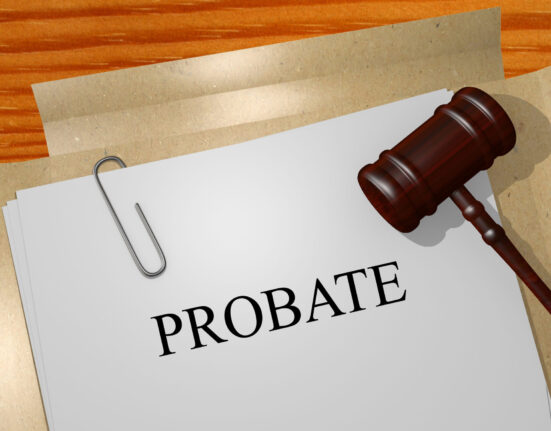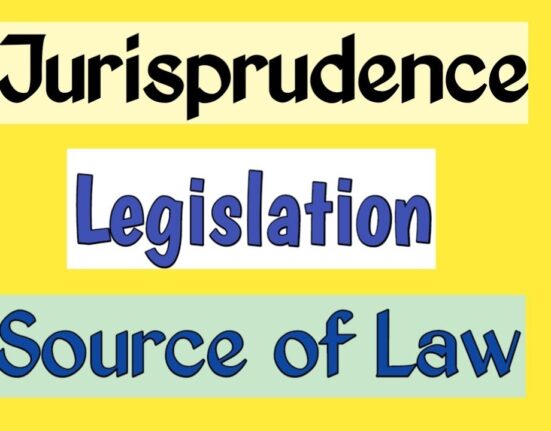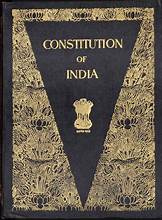Aditya Shaw, a 2nd -Year Student of Heritage Law College, has written this Article on “SALIENT FEATURES OF THE IMMORAL TRAFFICKING (PREVENTION) ACT”.
INTRODUCTION:
The exploitation of people through forced labor, sexual coercion, and other types of oppression is human trafficking, a horrific violation of fundamental human rights. By taking advantage of people’s weaknesses, this heinous practice subjected them to unfathomable misery and humiliation. Numerous nations have passed extensive legislative measures to resist such actions after realizing the urgent necessity to tackle this serious breach. The Immoral Trafficking (Prevention) Act of 1956 holds a key role in India’s legal framework for combating human trafficking. This article explores the key elements that underlie this act, clarifies its profound significance, and emphasizes its function as a defense against the epidemic of immoral trafficking.
The brutal character of human trafficking necessitates strict legal measures that not only denounce such behavior but also protect the rights of people who become a victim of this heinous crime. The Immoral Trafficking (Prevention) Act, often known as PITA, has been serving as a bulwark against the problem ever since its establishment. We obtain a greater understanding of its role in limiting the nefarious activities of immoral trafficking networks by exploring its key characteristics and contextualizing its significance. This investigation reflects our shared aspiration to create a society where we treat everyone with respect and dignity and where we break the bonds of exploitation.
MEANING OF THE IMMORAL TRAFFICKING (PREVENTION) ACT:
To tackle the serious problem of human trafficking, India passed the Immoral Trafficking (Prevention) Act (ITPA) in 1956. According to the Act, “immoral trafficking” refers to the transportation, recruiting, harboring, or receiving of people under duress for the purposes of forced labor, prostitution, or other types of sexual exploitation. It acknowledges that human trafficking, especially of women and children, is an abhorrent crime that breaches their basic rights and dignity.
The Act recognizes the urgent need for strict regulations to stop human trafficking and stop the exploitation of the weak. It includes a broad range of trafficking-related behaviors, such as moving victims, enlisting them in abusive conditions, and then harboring or accepting them on behalf of traffickers or other participants in the trade. The Act emphasizes that perpetrators can use several forms of coercion, including physical violence, threats, deception, or other forms of deceit, to violate the autonomy and free choice of victims.
Definition
By specifically defining “immoral trafficking,” the Act creates a legal framework for identifying and prosecuting individuals engaged in these illegal acts. It enables law enforcement agencies to take the required steps to stop trafficking, investigate it, and punish offenders. The Act recognizes the significance of breaking up trafficking networks and holding accountable not just the primary offenders but also those who aid in or profit from these exploitation techniques.
The Immoral Trafficking (Prevention) Act further emphasizes how important it is to safeguard victims’ rights and dignity. It acknowledges the vulnerabilities experienced by those who are trafficked, especially women and children who are abused physically, sexually, and psychologically. Through support, recovery, and reintegration services, the Act seeks to restore their well-being. It highlights the significance of victim-centric strategies that put their security, healing, and empowerment first.
The Immoral Trafficking (Prevention) Act’s adoption is a critical step the Indian government has taken in the fight against human trafficking and to help its victims. It represents the country’s dedication to upholding human rights, preventing the exploitation of vulnerable groups, and establishing a society free from the scourge of trafficking.
SALIENT FEATURES OF THE IMMORAL TRAFFICKING (PREVENTION) ACT:
1. Criminalization of Immoral Trafficking:
The Immoral Trafficking (Prevention) Act’s core principle is the clear illegality of human trafficking, which extends to all aspects of this abhorrent business. The Act specifically addresses the recruitment, transportation, harboring, or receiving of individuals for forced labor, prostitution, or other types of sexual exploitation using coercion, abduction, deception, or manipulation. This thorough definition guarantees that all aspects of trafficking are included in the scope of the legislation, leaving no space for evasion or ambiguity.
2. Stringent Punishments:
The Act emphasizes the seriousness of immoral trafficking by enforcing harsh penalties on those found guilty of such terrible offenses. The severity of the punishments imposed is determined by the unique circumstances of each case, such as the age of the victim, the type of offense committed, and the presence of repeat offenders. If found guilty, offenders risk life in prison and significant fines in addition to a minimum sentence of seven years. This strict legal structure serves as both a deterrence and a way to provide justice for trafficking survivors.
3. Protecting the Rights of Victims:
The unrelenting dedication to preserving the rights and dignity of victims is at the heart of the Act’s ethos. It recognizes the weaknesses of trafficked people, who frequently experience physical, sexual, and psychological abuse. The Act includes provisions for victim protection, rehabilitation, and reintegration to address these issues. This entails the construction of shelters and rehabilitation facilities where survivors can receive all the assistance they need, from education and training to medical care and psychiatric counseling. The Act aims to restore survivors’ autonomy and make societal integration easier by fostering them.
4. Protective Homes and Rehabilitation Centers:
The Act acknowledges the urgent need for designated facilities with a focus on the whole healing of trafficking survivors. Protective homes and rehabilitation facilities create havens designed to offer not only a place of physical safety but also a nurturing environment that fosters emotional recovery. These clinics provide survivors with the medical attention, psychological support, legal aid, and educational possibilities they need to reconstruct their lives.
5. Preventive Measures:
The Act promotes a proactive strategy through preventive measures because it recognizes that the battle against immoral trafficking goes beyond after-the-fact responses. Law enforcement organizations have the power to carry out proactive raids, apprehend offenders, and save victims from abusive circumstances. The Act also stresses the significance of educational programs, sensitization activities, and public awareness campaigns for preventing trafficking and raising a society that is on guard against its occurrence.
6. Witness Protection:
The Act adds the crucial element of witness protection in consideration of the inherent difficulties witnesses encounter when confronting traffickers. The Act aims to promote witnesses’ cooperation in court by protecting their identities and well-being. This protection is essential in ensuring that witnesses and victims can testify against offenders without fear of reprisal.
7. Confiscation of Assets:
The Act gives authorities the authority to seize and confiscate assets obtained from such illegal organizations since it recognizes the financial foundations of immoral trafficking. This tactical move accomplishes two goals at once: it undermines the financial foundation of traffickers and reallocates funds to programs that assist survivors and fight trafficking. The profitability of trafficking operations must be reduced through this action.
8. Cross-Border Cooperation:
Effective human trafficking prevention requires international cooperation because the problem often crosses national borders. The Act promotes international collaboration while acknowledging this fact. As a result, the overall effort to bring down transnational trafficking networks is strengthened. It also makes it easier to share information, coordinate investigations, and extradite offenders.
9. Special Courts:
The Act urges the creation of specialized courts that hear only matters involving human trafficking to hasten the administration of justice. These courts are created to guarantee quick and effective trials, cutting down on delays and lessening the stress suffered by victims throughout the judicial process. Their existence serves as a reminder of how seriously society takes the crime of human trafficking.
The Immoral Trafficking (Prevention) Act, in conclusion, is evidence of society’s dedication to ending the scourge of human trafficking. It aims to stop trafficking, protect victims’ rights, and hold offenders accountable through its thorough structure. The Act paves the way for a future in which we safeguard the dignity and liberty of every person and extinguish the evil of exploitation by addressing every aspect of this complex topic.
CASE LAWS: RELATING TO SALIENT FEATURES OF THE IMMORAL TRAFFICKING (PREVENTION) ACT
• Vishal Jeet v. Union of India (1990)-
The Supreme Court of India emphasized the critical importance of effectively implementing the Immoral Trafficking (Prevention) Act in the landmark case of Vishal Jeet v. Union of India (2019)[1]. The Court emphasized the importance of authorities working together to combat trafficking, rescue victims, and prosecute offenders. It acknowledged the importance of addressing this pervasive issue and called for a comprehensive approach to addressing the challenges posed by illegal trafficking in the country.
The Supreme Court’s directive in the Vishal Jeet case emphasized the authorities’ responsibility to combat trafficking in a proactive manner. To effectively enforce the Immoral Trafficking (Prevention) Act, it emphasized the importance of conducting regular raids, apprehending traffickers, and rescuing victims from exploitative situations. Furthermore, the Court emphasized the importance of prosecuting offenders properly, imposing harsh punishments, and ensuring justice for victims. This historic ruling served as a rallying cry for authorities to prioritize the fight against human trafficking and take decisive action to protect vulnerable people from this heinous crime.
• Ashok Sharma v. State of Bihar (2012)-
The legality of taking cognizance under Section 4/5 of the Immoral Traffic (Prevention) Act, 1956 was examined in the case of Ashok Sharma v. State of Bihar[2], heard by the Jharkhand High Court. The petitioner challenged the cognizance on the grounds that the investigating officer, Sri B.P. Choudhary, had not been designated as a special police officer as required by the Act. The Court ruled that because the investigating officer did not fulfill Section 13 of the Act, which requires the appointment of a special police officer not lower than the rank of an Inspector of Police to handle offences under the Act, his investigation lacked jurisdiction.
As a result, the Court granted the application in part, striking down the portion of the order that took cognizance under Section 4/5 of the Immoral Traffic (Prevention) Act while noting that the investigating officer retained authority to investigate offences under the Indian Penal Code.
The Ashok Sharma case emphasizes the critical importance of adhering to procedural requirements under the Immoral Traffic (Prevention) Act. It demonstrates the importance of appointing a qualified special police officer to investigate violations of the Act, as failure to do so can result in a lack of jurisdiction and jeopardize the legality of proceedings. This case also serves as a reminder that strict adherence to legal provisions is essential for maintaining the legitimacy and efficacy of investigations and legal actions pertaining to Act offences.
• Sri Dilip Jana vs The State of West Bengal (2009)-
The focus of the legal case Dilip Jana v. State of West Bengal[3] was a charge sheet filed under sections 3, 4, 5, and 7 of the Immoral Trafficking (Prevention) Act, 1956. The accused requested that the chargesheet be quashed, citing a precedent (Ashoke Giri v. State) as a basis for treating their case similarly. The court examined the allegations against the accused, emphasizing the similarities between their situation and the precedent. While a lack of evidence prevented substantiating the charges under sections 3, 4, and 5, the court shifted its focus to the offence under Section 7 of the Act, which deals with prostitution in specific areas.
The court interpreted the section and determined that because the occurrence occurred within 200 meters of public places such as a college and schools, the offence under section 7 could be proven against the accused. As a result, the court dismissed charges under sections 3, 4, and 5, but denied the petitioner’s request to dismiss charges under section 7.
The case of Dilip Jana v. State of West Bengal reveals the court’s meticulous examination of the Immoral Trafficking (Prevention) Act, 1956. It exemplifies the judiciary’s commitment to precisely interpret legal provisions to ensure addressing charges appropriately, and it emphasizes the importance of accurately assessing evidence in determining the legality of charges under various sections of the Act.
• Nisha v. State of Kerala (2014)-
The petitioner in Nisha v. State of Kerala[4] faced charges under Sections 4, 5, and 7 of the Immoral Traffic Prevention Act, 1956. The case concerned the legality of actions taken by the Circle Inspector of Police at Ernakulam Town North Police Station in connection with a search and arrest. The petitioner’s counsel contended that the Act only authorized Special Officers or Traffic Police Officers to carry out such actions. The claim was further supported by a notification issued by the Kerala government designating Circle Inspectors of Police as “Special Officers” for dealing with Act-related offences. The court also examined the notification and determined that the Circle Inspector had not followed the procedural requirements outlined in Section 14(3) of the Act. As a result, the court ruled that the proceedings against the accused were not legal and quashed the charge sheet as well as all subsequent proceedings.
The case of Nisha v. State of Kerala emphasizes the importance of adhering to the provisions of the Immoral Traffic Prevention Act, particularly those pertaining to the authority of officers conducting searches and arrests. It emphasizes the critical role of Special Police Officers designated by the government, as well as the importance of adhering to prescribed procedures. This case not only demonstrates the Act’s application in real-world situations, but it also emphasizes the judiciary’s role in ensuring legality and justice in cases involving human trafficking and immoral activities.
CONCLUSION:
The Immoral Trafficking (Prevention) Act stands as a testament to India’s commitment to safeguarding human rights, eradicating exploitation, and establishing a society that upholds the dignity of every individual in the unyielding battle against the heinous crime of human trafficking. This comprehensive legislative framework addresses the many facets of immoral trafficking, from defining criminal actions to providing victim protection and enforcing harsh punishments. The Act’s importance in combating the pervasive threat of human trafficking is highlighted by its key features, which not only criminalize such heinous acts but also prioritize victim well-being and cooperation.
The Act, with its unequivocal definition of “immoral trafficking,” covers all aspects of this pernicious trade, ensuring that no aspect is overlooked. The emphasis on harsh penalties for offenders in the Act sends a strong message that society will not tolerate the exploitation of vulnerable people. Furthermore, the Act’s provisions for victim protection, rehabilitation, and reintegration demonstrate a commitment to restoring survivors’ dignity and autonomy.
Furthermore, The proactive approach of the Act, as demonstrated by provisions for preventive measures, specialized courts, and cross-border cooperation, demonstrates its dedication to preventing trafficking networks and ensuring swift justice. The inclusion of witness protection and asset confiscation in the Act demonstrates its comprehensive approach.
Moreover, in a world rife with exploitation of the vulnerable, this Act serves as a beacon of hope, embodying society’s collective effort to dismantle oppressive networks, restore victims’ lives, and ensure a future in which we respect the rights and dignity of every individual. As the fight against human trafficking continues, the provisions of the Act, together with a vigilant judiciary and robust enforcement, serve as the foundation for a more just and humane world.
Also Read: Emergency Provisions Under the Indian Constitution, Click Here!
References
[1] Vishal Jeet vs Union Of India And Ors on 2 May, 1990 (indiankanoon.org)
[2] Ashok Sharma vs State Of Bihar on 16 February, 2012 (indiankanoon.org)
[3] Sri Dilip Jana vs The State Of West Bengal on 1 July, 2009 (indiankanoon.org)
[4] Nisha v. State Of Kerala | Kerala High Court | Judgment | Law | CaseMine
SALIENT FEATURES OF THE IMMORAL TRAFFICKING (PREVENTION) ACT







Leave feedback about this